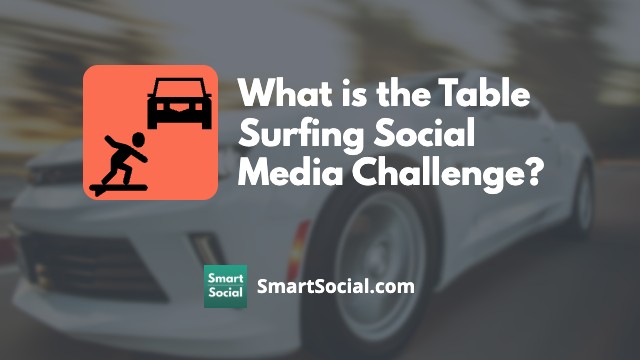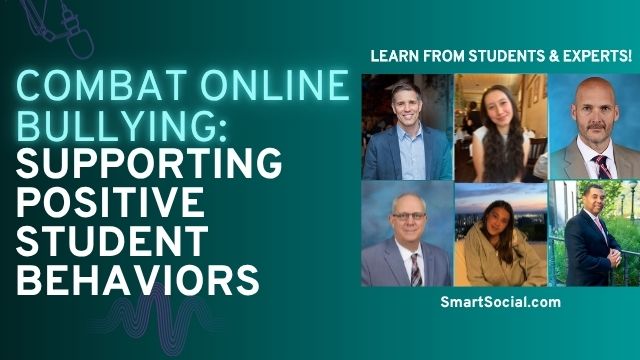5 Steps to Establishing a Positive Personal Brand for Students
Green Zone App
(Click here to learn more)
Dangerous Social media challenge
(Click here to learn more)
Red Zone App
(Click here to learn more)
Gray Zone App
(Click here to learn more)

Putting the importance of a positive and disciplined personal brand into real-life perspective for students is critical. It is human nature to be able to implement a strategy more effectively when you understand the impact it has upon you individually.
1. Define their personal brand

Robert “Bob” Levant, Transformation Coach
Have your students create a list of five words that define their personal brand. Once they settle upon 5 words or characteristics, ask them to provide a thorough written definition for each term.
Identify their goals
- Next, assign each participant the task of drafting 5 goals they wish to achieve. There should be one goal for each of the following future times: 1 day, 1 week, 1 month, 1 year, 5 years.
Set up an interview
Students take turns interviewing each other about their personal brands and their 5 goals.
Once these personal brands are defined and the goals solidified, put the students into pairs. The students take turns interviewing each other about their personal brands and their 5 goals. They take careful notes with specific information. The interview should include detailed questions inquiring how the student will use social media to arrive at each goal including what tasks they will perform to make the goal more realistic. For example, if a high school senior has a 5 year goal of attending medical school after college, they may discuss posting an educational article once a week about innovations in science or medicine with positive thoughts and comments. The same student may have a 1 day goal of simply reviewing their stream and removing any negative posts.
Create affirmations
Each student should write 5 short affirmations for their partner expressing positive actions to create a personal brand.
At the completion of the interviews, each student should write 5 short affirmations for their partner expressing positive actions to create a personal brand and achieve their goals. When they are complete, the affirmations should be written in a pleasing form and exchanged. Encourage the students to hang the affirmations inside their locker or another place they will be frequently seen. The last affirmation should be the same for everyone and should read something like this, “I will post, tweet and share only positive thoughts and images that represent my personal brand.”
Teamwork breeds success
Students should be encouraged to protect their own personal brand while also reminding others to do the same.
Classmates, friends and teammates who understand one another’s goals and aspirations are more likely to support each other in achieving the success of a positive social media presence. Students should be encouraged to protect their own personal brand while also reminding others around them to do the same. Knowing a friends’ brand and goals makes the potential damage real when you observe them post something negative. Remind them to remove a negative thought from social media and they will return the favor when you make a mistake.
2. Find or create an unpaid internship in your field of study

Diane Huth, MA MBA, Brand You Guide
Find or create an unpaid internship in your field of study. As a high-school student, you probably won't qualify for a paid internship. However, you can volunteer for an unpaid internship to learn about your desired professional field. Search out a small company or a visionary leader you would like to have as a mentor, and volunteer to work for that person for a period of time for free for the experience. This can be part time 10 - 15 hours a week, or full time during the summer. Use this unpaid internship to gain credentials for a later paid internship in a larger company. Make sure you get a letter of recommendation, and a recommendation on LinkedIn. It's never too early to create and promote your LinkedIn page. Start building out your LinkedIn page now. List your current schooling, awards, recognitions, part time jobs, volunteer roles, and awards and honors. Allow LinkedIn to access your email database to find out who you know who has a LinkedIn page. Ask for recommendations from teachers, mentors, supervisors in volunteer organizations, or anyone who knows you and your work ethic. Start reading and responding to articles of interest with a few insightful comments. You will be far ahead of your peers who may not get working on their LinkedIn profiles until well into their college years.
3. Show images of you using your talents and strengths to benefit others

Erin Goodnow, Going Ivy
As with anything you put online, beware of how it can be interpreted. College admissions officers will look at a student's ZeeMee video, Instagram account, Facebook profile and more to see how wonderfully creative, unique and social you are. But they'll also look to see how mature you are, and your online presence shouldn't spoil that for you with inappropriate language, memes, or photos. Show images of you engaging in your community, using your talents and strengths to benefit others, enjoying family and friends, and doing things you are passionate about. If you say you're passionate about it on your college application, that should be evident in social media, as well.
4. Use videos to enhance your high school resume

Josh Ochs, SmartSocial.com
Consistently posting helpful and positive videos is one of the best ways to shine online. With your parents permission, create a YouTube channel using your first and last name. Find unique ways to use your YouTube channel to tell your college admissions story. Create videos that teach people something you are passionate about, highlight a volunteering experience you had, talk about your achievements in a humble and grateful way, or showcase your talents. Post your videos to your other social media profiles like LinkedIn, Instagram, Facebook, or ZeeMee and include a short written description about the video.
5. Post successful school projects in the LinkedIn “Projects” section

Dawn D. Boyer, Ph.D., D. Boyer Consulting
Ensure the student has created a LinkedIn profile with a professional headshot and a list of school or job related activities, as well as volunteer experience. If the student is in the ‘fine arts’ - create a portfolio of videos, photographs, or audio recordings of their sample work as an online portfolio. If the student is in sports, then perhaps create a social media page that showcases the entire team and their participation in the team achievements, including leadership (e.g., team Captain). Post essays, books, or successful school projects descriptions or information in the LinkedIn “Projects” section. Encourage the student to participate and provide documentation of their volunteer time to nonprofits and charities.
6. Make a website

Andrew Selepak, Ph.D., University of Florida Resumes are either paper or electronic documents that need to be passed from person to person by hand, or sent as attachments that most people don’t open. And they offer few options to demonstrate skills, other than text. However, a portfolio website allows students to show off who they are through multimedia. Students can also include their social media accounts on the site, videos of them including an elevator pitch, and photos interacting or working with companies. Since a website can link to any social media platform, it is more valuable than any one platform to build your brand.
6. Craft a comprehensive online presence that conveys why you’re pursuing your particular route
Karilyn Dearie, CV Genius
Colleges and employers want to see today’s students answer the question: Why? The stigma of America’s modern youth is that they’re keen to follow the latest trend without rhyme or reason. Prove your purpose by crafting a comprehensive online presence that conveys why you’re pursuing your particular route by detailing your driving factors and ambitions in your social media profiles, resume, college statement, and LinkedIn page.
Conclusion
Start with helping young people to define their brand. Use interesting and informative educational exercises to support young people in creating a unique personal brand for themselves and those around them. Establish the importance of honoring and supporting one another’s personal brand as they work together to achieve their goals. Remind them that the internet is the best place to introduce themselves to future colleges, coaches, and employers.
Protect your family and enter for a chance to win cool prizes
Become a member or log in to learn more on this topic
Protect your family and enter for a chance to win cool prizes

., start learning from this page to earn points!*
Hello, I'm Josh, the founder of SmartSocial.com.
Don't leave this page until you fill out our feedback form that will appear after you learn from the resources...
Become a Very Informed Parent (VIP) to get our social media suggestions in your email every Tuesday & Thursday.



Hello, I'm Josh, the founder of SmartSocial.com. Protect your family by taking my 1 minute quiz
This quiz will help you understand how safe your family is


Schools & Districts: Partner with us to protect your community online
Our remote presentations (and website) teach over a million parents and students each year how to be safe so they can shine online. We teach students how their accounts can be used to create a portfolio of positive accomplishments that impress colleges and employers.


Join Our Smart Social Podcast
each week on iTunes
With over 500 episodes, Josh Ochs interviews psychologists, therapists, counselors, teachers, and parents while showing you how to navigate social media to someday shine online.
Listen on:



.jpg)
.jpg)
.jpg)


